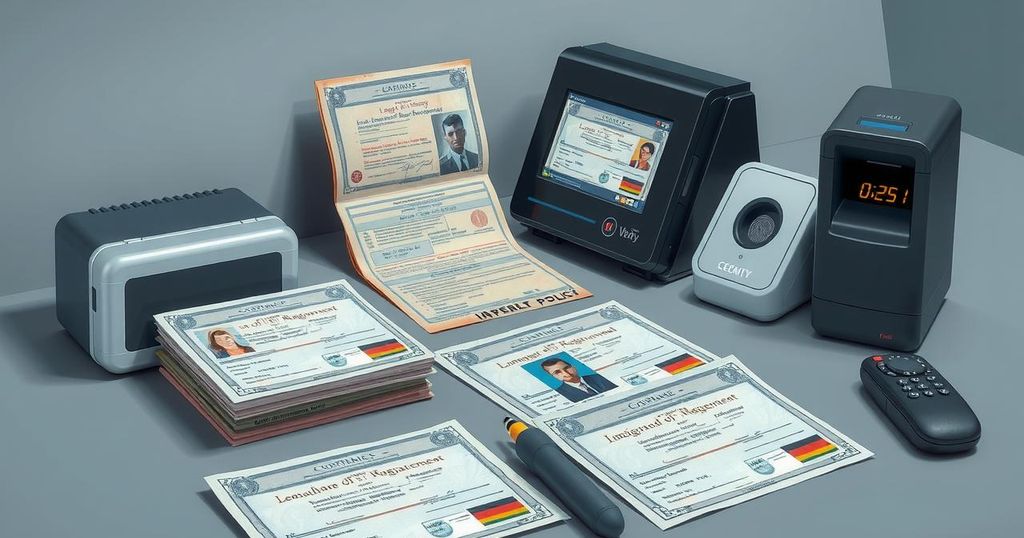The IATA has successfully tested a biometrics proof-of-concept showcasing a fully digital travel experience between Hong Kong and Tokyo. This initiative leverages digital wallets containing multiple verifiable credentials, enabling seamless airport processes through biometric authentication. The One ID initiative aims to enhance this system, promoting automation and digitalization in response to increasing global passenger numbers. With supportive government efforts, this marks a significant step towards a transformed travel landscape.
The International Air Transport Association (IATA) has recently announced the success of a biometrics proof-of-concept (PoC) aimed at demonstrating a fully digital travel experience. The PoC included two passengers who utilized varied digital wallets and travel credentials during a round trip journey between Hong Kong and Tokyo. This two-day initiative collaborated with major partners including Cathay Pacific, Hong Kong International Airport, Narita International Airport, and several technology firms like NEC and Facephi, among others. It built upon a prior PoC, transitioning from a simulated environment to actual airport operations, highlighting the potential for biometric systems in real travel scenarios. During the PoC, the travelers accessed multiple verifiable credentials stored in their digital wallets, such as ePassport copies, live biometric images, and frequent flyer memberships. The integration of these credentials allowed them to seamlessly navigate airport processes such as bag drop, security, immigration, and boarding, while purely relying on biometric authentication, negating the necessity to present physical travel documents. Nick Careen, IATA’s Senior Vice President for Operations, Safety, and Security, emphasized the importance of advancing this digital experience, stating, “A seamless fully digital travel experience powered by digital identity and biometrics has moved from theory to proven reality.” One of the vital components in achieving this innovation is the One ID initiative, designed to streamline passenger processing not just at the airport but also during pre-travel preparations. This initiative integrates contactless travel systems and digitalized admissibility checks, allowing passengers to arrive at the airport ready to board with minimal physical interactions. The foundation of this digital identity system is a structure that accommodates various integrations while ensuring user privacy and data minimum-sharing principles, thus providing passengers with a more efficient travel experience. IATA’s projections indicate that global passenger traffic is set to double by 2041, underscoring the urgent need for automating and digitizing airport processes to handle this increase effectively. Furthermore, the EUDI Wallet initiative reflects a growing recognition by governments to adopt digital travel credentials, aligning with ICAO standards and demonstrating interoperability between existing biometric systems at the involved airports. Thus, the IATA’s advancements in digital travel suggest a significant shift towards biometric and digital identification solutions in aviation, promoting a faster, more secure, and efficient travel framework.
The rise of biometrics and digital identity systems has paved the way for a transformative approach to passenger travel within the aviation sector. As global travel demands continue to increase, projected to reach eight billion passengers by 2041, the need for efficient and automated processes becomes paramount. Biometrics, which utilize unique physical attributes for identification, serve as a key enabler in creating smooth travel experiences while minimizing queuing times and enhancing security measures. The collaboration among stakeholders including airlines, airports, and technology firms is crucial in evolving these systems and implementing standards such as IATA’s One ID initiative, which advocates for a fully digital travel ecosystem.
In conclusion, the IATA’s recent proof-of-concept underscores the potential and practicality of utilizing biometric systems and digital identities to revolutionize air travel. As demonstrated in the successful execution of a fully digital travel experience, the aviation industry is moving closer to addressing the future demands of passenger traffic while ensuring seamless and secure processing. The established collaboration among industry players and adherence to international standards will be pivotal in fully realizing these advancements.
Original Source: www.biometricupdate.com





